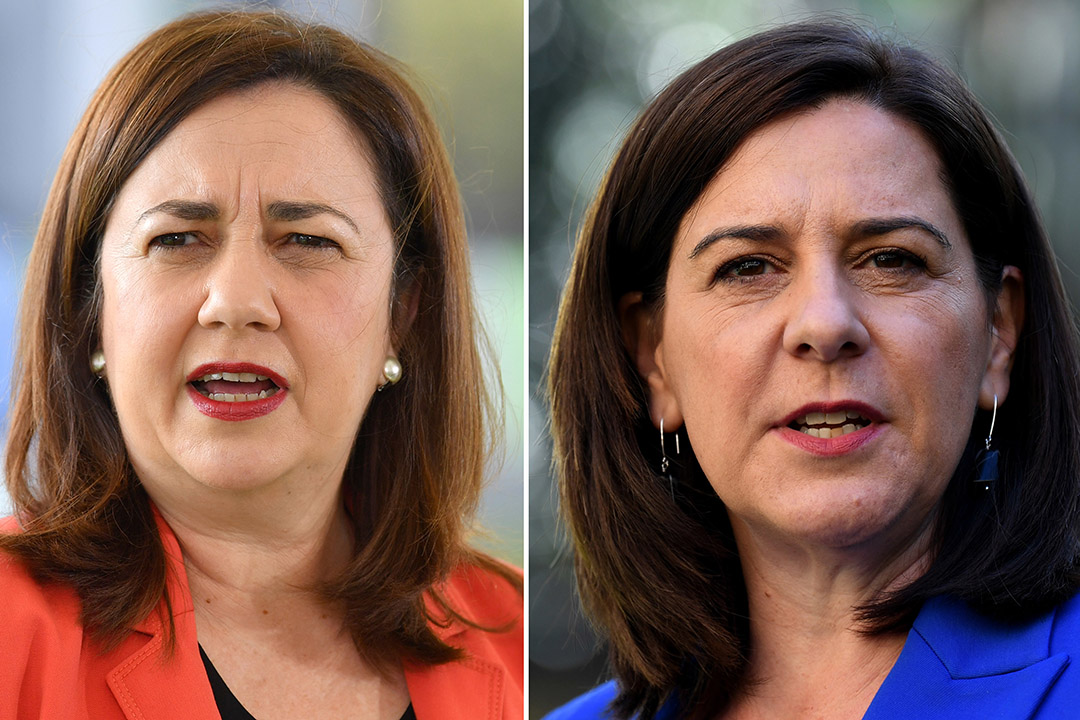

In my article for Switzer Daily “Predicting these five elections” published on Tuesday 4 August, I promised to predict the result of five elections. In doing so, however, I asked for leave to delay my Queensland prediction until close to polling day. The reason for my request was uncertainty about what to write. Whereas I claimed to know who would win in the Northern Territory, the ACT, New Zealand and the USA, genuine doubt then existed in my mind about Queensland.
Anyway, my prediction for next Saturday now is 48 for Labor, 38 for the Liberal National Party, three Katter’s Australian Party, two for the Greens and one each for Pauline Hanson’s One Nation party and Ms Sandy Bolton in Noosa.
The result in November 2017 was 48 Labor, 39 LNP, three for KAP and one each for the Greens, PHON and Bolton. So, I am predicting a slightly worse result for the LNP than last time, and a majority Labor government headed by Annastacia Palaszczuk. My prediction today is largely opinion poll induced but supplemented by my own instinctive feel for the Queensland situation. It is roughly in line with the general expectation.
In terms of individual seats, I confidently predict Labor will lose South Brisbane to the Greens but gain Pumicestone from the LNP. There are six Labor versus LNP “toss-ups” and I am giving the six seats three-three between the two big parties
Meanwhile, two further elections have been and gone. In my article for Switzer Daily “Will Jacinda Ardern win on October 17? And who’ll lead the ACT?” published on Monday 12 October I gave correct answers to both questions. My forecast: Labour’s Ardern would win in New Zealand and Labor’s Andrew Barr would continue as Chief Minister of the ACT.
For both elections, however, I gave details that went beyond naming the head of government post-election, and beyond the general statement in my last article that “Green parties love proportional representation”. That Green parties love PR was best illustrated by the ACT result which is 10 seats for Labor, nine for the Liberals and six Greens. At the October 2016 election the result was twelve seats for Labor, eleven Liberals and two Greens.
While in one sense I might commend myself for getting it right in the ACT, the detailed predictions I gave differ enough from the actual result as to cause me to write a further article later in the year discussing those details. They make this ACT election more psephologically interesting than it might seem to a reader not living in Canberra.
For New Zealand, by contrast, I am very happy with the details of my predictions, but I begin by noting that the National Party suffered a slightly heavier defeat than I predicted. That means Labour is likely to have an absolute majority in seats where I had Labour falling slightly short, thus needing a coalition government including the Green Party.
In the ACT the election is all wrapped up but that is not the NZ situation. Across the Tasman, their Electoral Commission gives the final votes for Saturday night but we must wait until Friday November 6 before we know the final results. The following comments, therefore, are based on the votes at close of counting on the night of Saturday October 17 combined with my assessment of what the final count might bring.
In my article, I predicted that the party list seats would distribute 22 for Labour, 10 for the ACT party, 9 for the Green Party and 7 for the National Party. I am now on track to be close to that. I expect the party list numbers now to be 22 for Labour, 9 for the ACT Party, 9 for the Green Party and 8 for the National Party.
An important comment made by me has come to pass: I wrote that National’s ability to get good local members elected in the constituencies would mean it loses out on the party list seats. That is what has happened as can be seen by comparing the party votes and candidate votes in the electorates won by the National Party.
In the following 24 electorates National members will be elected but Labour’s party vote has exceeded that of the National Party: Bay of Plenty, Botany, Coromandel, East Coast Bays, Invercargill, Kaikoura, Kaipara Ki Mahurangi, Maungakiekie, North Shore, Northland, Pakuranga, Papakura, Port Waikato, Rangitikei, Rotorua, Selwyn, Southland, Taupo, Tauranga, Tukituki, Waimakariri, Waitaki, Whangaparaoa and Whangarei.
That means only four of the 72 electorates returned a bigger party vote for National than Labour: Tamaki, Taranaki-King Country and Waikato won by the National Party and Epsom won by the ACT party.
This has been a good result for the Green Party. Expected to be starved of oxygen by Ardern’s appeal to those of green mindedness the Green Party was able to win the nine party list seats I predicted for it, but it actually did better than that. It will take from National the Auckland Central electorate. That would be an important scalp because once a party wins an electorate it escapes the need to pass the 5% threshold required to win party list seats. At this election the Green Party has won 7.6% of the party vote.
This has also been a good result for the system of Mixed Member Proportional representation, MMP. The main argument used for MMP over the previous first-past-the-post system was that MMP would make the House of Representatives more representative. That it has done such is shown by the simple statistic that there will be 56 women in the new parliament and 64 men. Under the old system the share of female members never exceeded one-fifth. The great majority of these female members will come from the Labour and Green parties. I estimate that three-quarters of them will come from those parties and only a quarter from parties of the right.
Being a proportional representation system MMP has translated votes into seats by party in a way that was very rare under the old system. It has also significantly increased the share of seats going to Maoris, Pacific islanders and Asians. For that reason, MMP supporters are cheering these results. As I explained in my previous article it was chosen by the people at referendums in the not too distant past. It can now be described as “entrenched”, the permanent system. (Malcolm Mackerras is Honorary Fellow of Australian Catholic University. malcolm.mackerras@acu.edu.au)